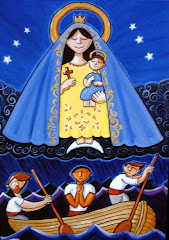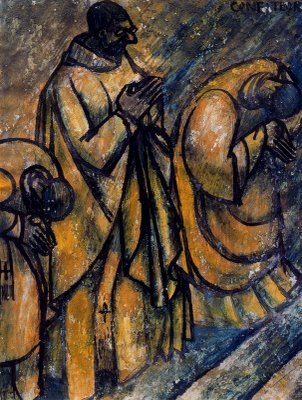St. Derfel Gadarn
5th or 6th century. According to legend, Saint Derfel was a great Welsh soldier
who fought at the Battle of Camlan (537), where King Arthur was killed. He may
have been a monk and abbot at Bardsey and later a solitary at Llanderfel,
Merionethshire,
him mounted on a horse and holding a staff was greatly venerated in the church
at Llanderfel until it was used for firewood in the burning of Blessed John
Forest, Queen Catherine of
In 1538, Dr. Ellis Price, Cromwell's agent for the diocese of Saint Asaph, wrote
to Cromwell about Derfel's statue. He wanted to know how he should dispose of
it, because "the people have so much trust in him that they come daily on
pilgrimage to him with cows or horses or money, to the number of five or six
hundred on April 5. The common saying was that whoever offered anything to this
saint would be delivered out of hell by him." (We know that only Jesus Christ
can save us from hell, but this testimony is an indication of the power of
Derfel's prayers.)
Cromwell ordered him to send it to
Price a 40 pound bribe, but the statue was still removed. On May 22, 1438, John
Forest of Greenwich was to be burnt for refusing the Oath of Supremacy. Just
before his execution, Derfel's "huge and great image" was brought to the
gallows. A centuries-old Welsh prophecy had predicted that "this image should
set a whole forest afire; which prophecy now took effect, for he set this friar
horse can be seen in Llanderfel
(Attwater2, Benedictines, Delaney, Farmer).



No comments:
Post a Comment